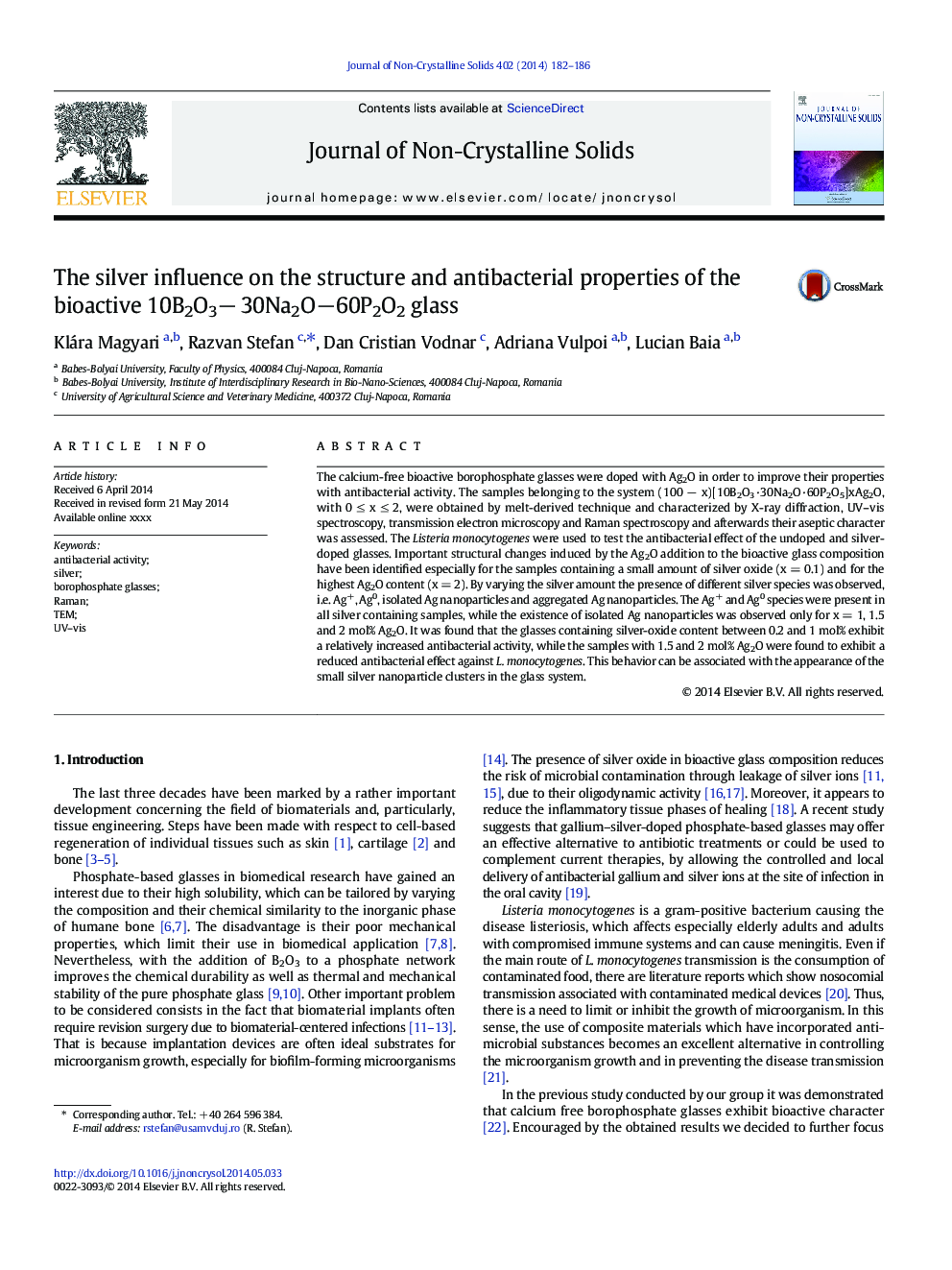| Article ID | Journal | Published Year | Pages | File Type |
|---|---|---|---|---|
| 7902078 | Journal of Non-Crystalline Solids | 2014 | 5 Pages |
Abstract
The calcium-free bioactive borophosphate glasses were doped with Ag2O in order to improve their properties with antibacterial activity. The samples belonging to the system (100 â x)[10B2O3·30Na2O·60P2O5]xAg2O, with 0 â¤Â x â¤Â 2, were obtained by melt-derived technique and characterized by X-ray diffraction, UV-vis spectroscopy, transmission electron microscopy and Raman spectroscopy and afterwards their aseptic character was assessed. The Listeria monocytogenes were used to test the antibacterial effect of the undoped and silver-doped glasses. Important structural changes induced by the Ag2O addition to the bioactive glass composition have been identified especially for the samples containing a small amount of silver oxide (x = 0.1) and for the highest Ag2O content (x = 2). By varying the silver amount the presence of different silver species was observed, i.e. Ag+, Ag0, isolated Ag nanoparticles and aggregated Ag nanoparticles. The Ag+ and Ag0 species were present in all silver containing samples, while the existence of isolated Ag nanoparticles was observed only for x = 1, 1.5 and 2 mol% Ag2O. It was found that the glasses containing silver-oxide content between 0.2 and 1 mol% exhibit a relatively increased antibacterial activity, while the samples with 1.5 and 2 mol% Ag2O were found to exhibit a reduced antibacterial effect against L. monocytogenes. This behavior can be associated with the appearance of the small silver nanoparticle clusters in the glass system.
Related Topics
Physical Sciences and Engineering
Materials Science
Ceramics and Composites
Authors
Klára Magyari, Razvan Stefan, Dan Cristian Vodnar, Adriana Vulpoi, Lucian Baia,
